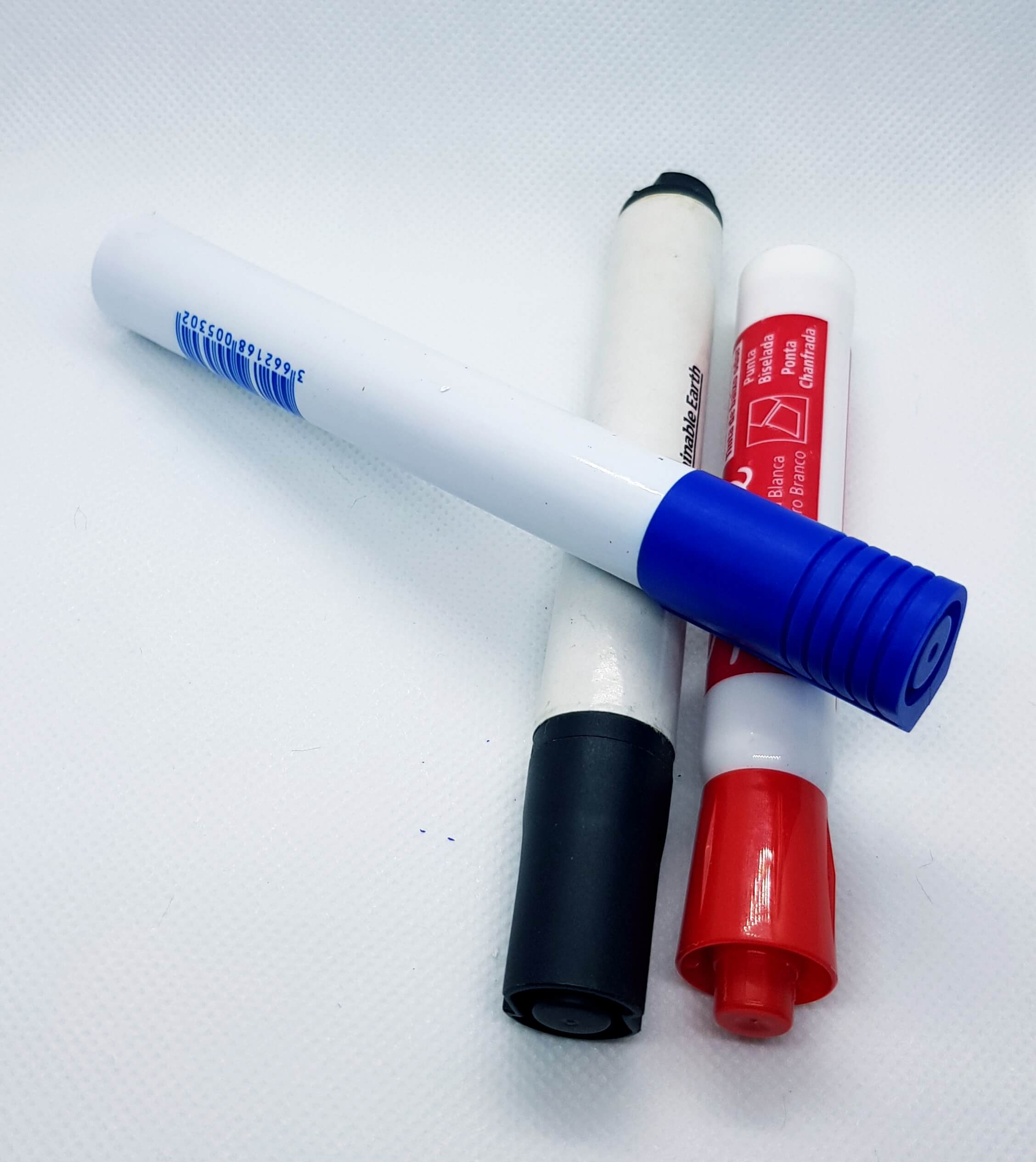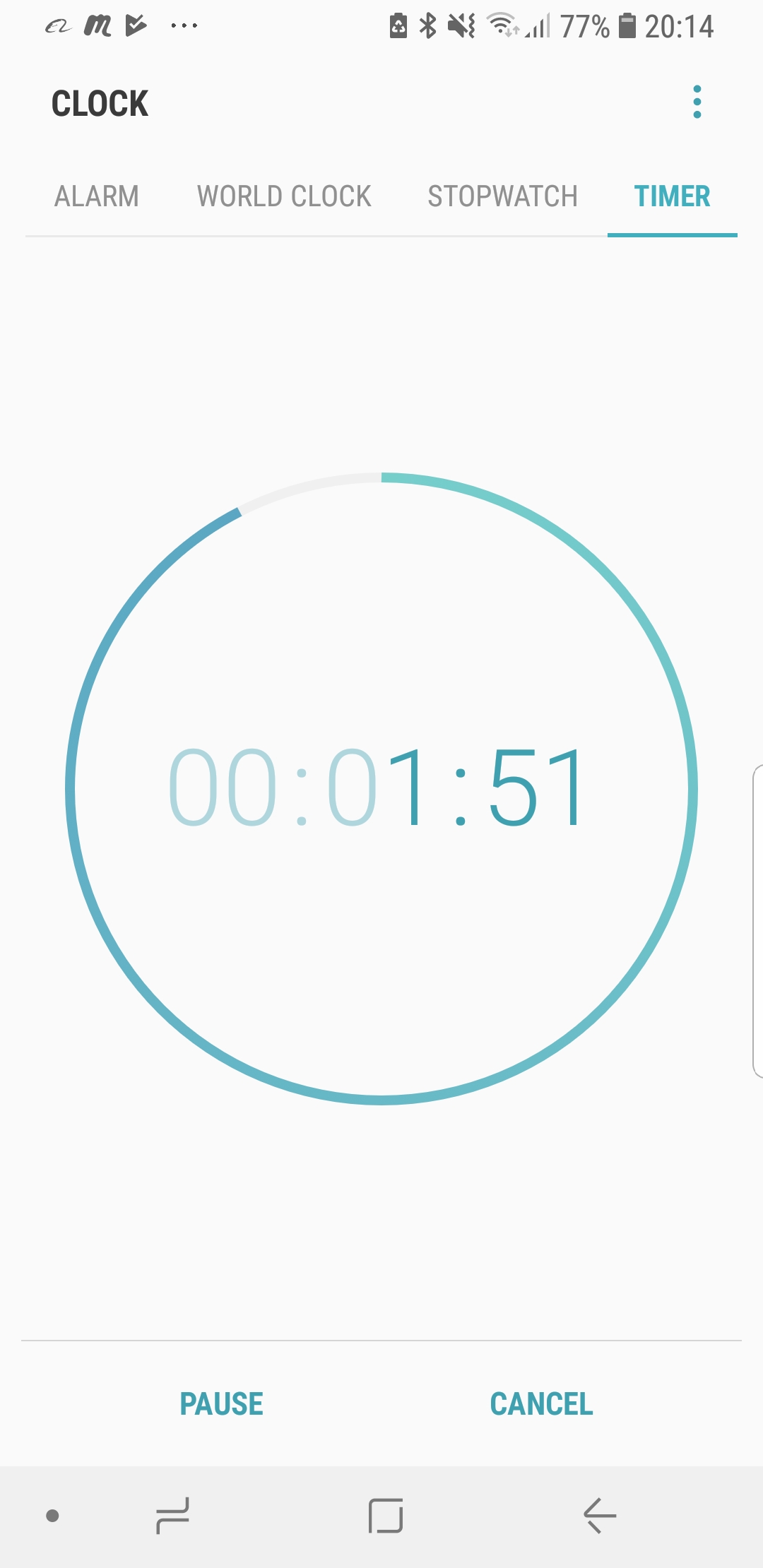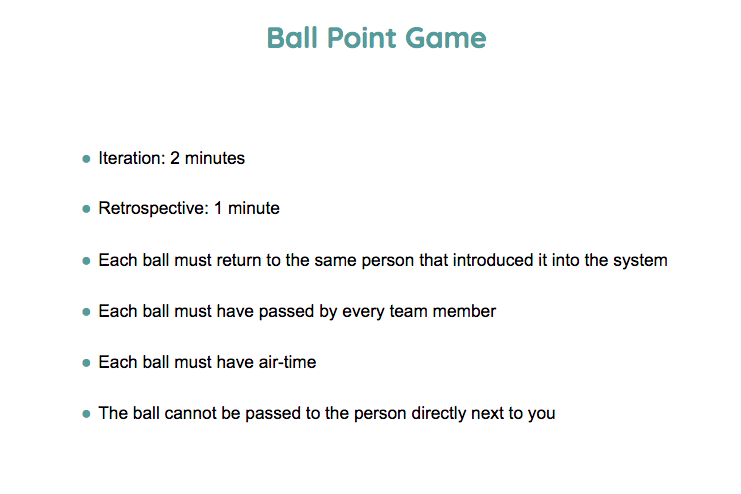Group: 5-any
Time: ~1 hour
When & What
This is a great game when introducing iterative ways of working, such as Scrum. It highlights the benefits not only of early feedback loops, but also the importance of collaboration, self-organisation and working together as a team. While observing the game, you can learn a lot about the team’s communication and collaboration patterns. It can also be a fun way to create a better understanding of flow and sustainable pace.
The group works as a team, trying to get as many balls as possible through the system in 2-minute intervals. It can be used with any sized group over 5, but we’d recommend to split them into multiple teams if more than 25.
Watch the video
Preparation
- Get a big bag of balls, ideally 100 or more.
- Write down the rules:
- Each iteration is 2 minutes long
- Between there is a 1-minute retrospection
- Each ball must return to the same person that introduced it into the system
- Each ball must have passed by every team member
- Each ball must have air-time
- The ball cannot be passed to the person directly next to you
Steps
- Round up the group in a big circle. Encourage anyone who has played the game before not to give any tips/suggestions that will spoil the game for the others.
- Introduce the goal of the game — Pass as many balls through the group as possible within two minutes, working as one big team.
- Introduce the rules (as per above) and also mention that if a ball is dropped, then it will be out of play and not counted.
- Let them know how many iterations you will run (5 is recommended).
- Give them 1 minute to discuss strategy for the first iteration.
- Ask them how many balls they think they will get through the system in the first iteration and write it down.
- Start the first 2-minute iteration, and then reiterate the rules if they are still unclear.
- Ask the team to count the completed number of balls, and record the actual number next to the estimated number.
- Give the team 1 minute to retrospect and discuss improvements to the process for the next iteration.
- Repeat point 6-9 until you have completed all the iterations.
- Debrief with the team to find out what they learned, reinforce the benefits with early feedback and draw parallels to their current work situation.
Debrief
Ask the group questions to find out what they learned/observed and to reinforce the benefits of early feedback, collaboration, and sustainable pace.
Iterative ways of working and feedback
- What changes did you see between the iterations? How did the first and last iteration differ?
- How important was the time to retrospect?
- How many balls do you think you would have had completed if you had run for 10 minutes straight, without stopping to retrospect and readjust the process?
Flow
- Is everyone familiar with the concept? If not, give a brief explanation of flow.
- What iteration felt best/worst and was most/least productive?
- How did working faster impact the actual output numbers?
Collaboration
- How did you think you worked as a team?
- Did everyone feel like their ideas and feedback got heard?
- Did anyone take charge, and did this change during the iterations?
During your debrief, don’t forget the very useful follow-up question why?.
Extra tips
General tip
After the game, continue to refer back to the activity when talking about feedback, flow etc.
Bonus run — The unachievable goal
- Run a bonus iteration to highlight the benefits of sustainable flow and the risks of setting unachievable goals and deadlines. Tell the team something like “The last time I ran this game, the group completed 142 balls (e.g. make up a number around 3-4 times as large as they have achieved so far). You need to beat that!”
- Continue to put pressure on the team during the iteration by pointing out how far from the goal they are.
- Observe — Look out for changes in the communication and quality (eg more balls being dropped or rules not being followed).
- Afterwards, debrief with questions around how they felt and their stress levels. Compare the defect rate and actual output with previous iterations.
Bonus run — The achievable/stretch goal
You can also do a bonus run with an achievable goal, slightly higher than the best results so far. Make sure the team agrees that it is doable. You can use this to highlight that some pressure is actually likely to increase productivity, in contrast to unachievable goals or no goal at all.
Creator/credits
Boris Gloger






I love this game and it can be used for bringing out so many different concepts! The last time I ran it the team forgot to set up a way to count the balls in the first round, which I could use as a segue to talk about measurements : )